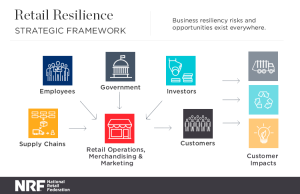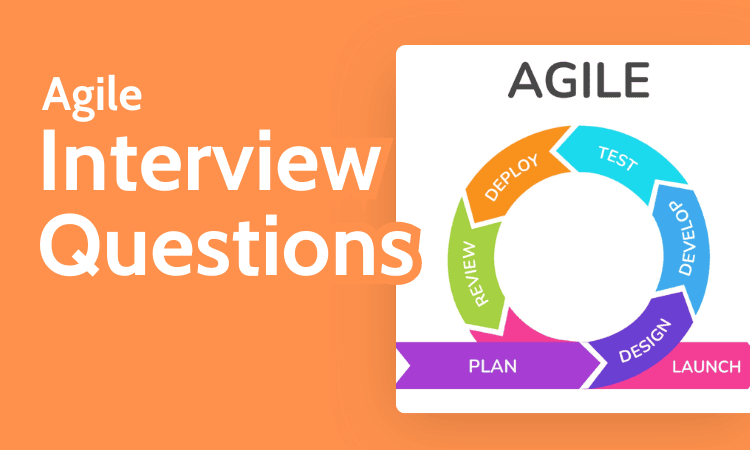
Key Takeaways: The Top 5 Agile Interview Questions
- What is your experience of working within an Agile team?
- Explain the core frameworks used within Agile.
- What is the role of a Scrum Master?
- Explain the key responsibilities of a product owner.
- What are the best tools available for Agile project management?
Facts & Expert Analysis: Agile Methodology Interviews
- Hard skills: Agile interview questions will require you to highlight your technical knowledge of Agile processes and your experience in Agile teams.
- Soft skills: Alongside your technical knowledge, you’ll also need to demonstrate the personality traits that help you work within an Agile team.
- Tools & Software: You’ll have an advantage if you are familiar with the best Agile project management tools, as it will demonstrate your knowledge of the latest software products.
If you’re joining or building an Agile team, then you’ll need to go through an interview process. Being (or finding) the right candidate isn’t easy, especially with something as complex as Agile processes. You’ll need to highlight your knowledge of Agile, including your experience with the best Agile tools. To help, we’re sharing the top Agile interview questions (and answers).
There’s a lot to unpack in this guide. It has 55 questions in total, all of which include examples of appropriate answers. It’s unlikely that every question would come up in an interview, but there’s no telling which ones a potential interviewer will ask, so we’re covering all our bases. To make it easy to digest, we’ve broken the questions down into different categories. Let’s take a look.

Kit Copson (Writer, Briefing Editor)
Kit Copson is a writer and briefing editor at Cloudwards, with over two years of expertise in streaming services and entertainment. With a BA in English & Creative Writing from Birmingham City University, Kit’s background as an English teacher uniquely positions her to convey complex information in an engaging and understandable manner. Beyond her professional pursuits, she’s an avid animal lover, a film enthusiast with deep roots in the VPN world from her time in China, and a writer whose work is featured in various publications including PetKeen, Excited Cats, and Hepper.

Sandra Pattison (Writer, Editor)
Sandra Pattison, a seasoned writer and editor at Cloudwards for over five years, specializes in VPNs, streaming services and children’s online security. Her journey in the tech world, starting with Cloudwards, has seen her contribute to several well-known tech publications while leveraging her personal experience as a parent to better understand the world of online safety. Outside of work, her interests range from photography to enjoying movies and playing The Sims.
Learn more about our editorial team and our research process.
Agile Interview Questions
We will kick-start the guide by looking at questions relating to Agile processes. If you’ve already worked within a development team, some of them may seem obvious to you. However, they’re still useful, and it’s a good way to refresh what you already know about Agile principles.
1. What Is the Agile Process Briefly Explained for an Agile Team?
Answer: The Agile process involves breaking down work into phases, which requires constant communication and collaboration, adaptation, and continuous improvement. It also involves attending to (and addressing) any issues, bugs and new requests that may arise during the development process.
2. Can You Describe Some Important Parts of the Agile Process in Agile Software Development?
Answer: Traditionally, Agile is broken down into five stages. These are ideation, development, testing, deployment and operations. Many Agile frameworks also have different events, which include the planning of sprints, daily scrum meetings, sprint reviews (where the dev team tests the latest iterations of software) and sprint retrospectives to assess the success of completed sprints.
3. How Does Agile Differ From Traditional Software Development?
Answer: Traditional software development includes a fixed plan with a linear approach towards the final outcome. Agile software development requires you to continuously review the development stages, making changes where necessary and sometimes going backward in order to move forward.
4. What Are the Different Types of Agile Methodologies Used by Development Teams?
Answer: The different Agile processes include Scrum, Kanban, Scrumban, Extreme Programming, Lean software development, Crystal, the dynamic systems development method, adaptive software development and feature-driven development.
5. How Is Agile Testing Executed and What Are Its Core Principles in Agile Projects?
Answer: In most Agile frameworks, testing occurs frequently. For example, in test-driven development, testing happens early and often. Agile testing also includes obtaining continuous feedback, ensuring that you provide value to the end user, automating tests and responding well to change.
6. What Are the Advantages and Disadvantages of the Agile Model in Agile Software Development?
Answer: Agile is a great way to implement strong team collaboration and communication. It allows you to constantly check in on customer satisfaction and deliver a high-quality product that satisfies the end user.
A drawback to Agile is that it can often put pressure on resources, both work-related and financial, which can lead to scope creep. It also requires everyone to communicate effectively, which sounds simple in theory but isn’t always achievable in practice.
7. Can You Explain Iterative Development and Incremental Development in Agile?
Answer: Incremental development involves breaking down a large piece of software into smaller segments, developing them and testing them accordingly. In Agile, iterative development is when tasks are repeated in specific cycles (sprints), and the software evolves after each iteration.
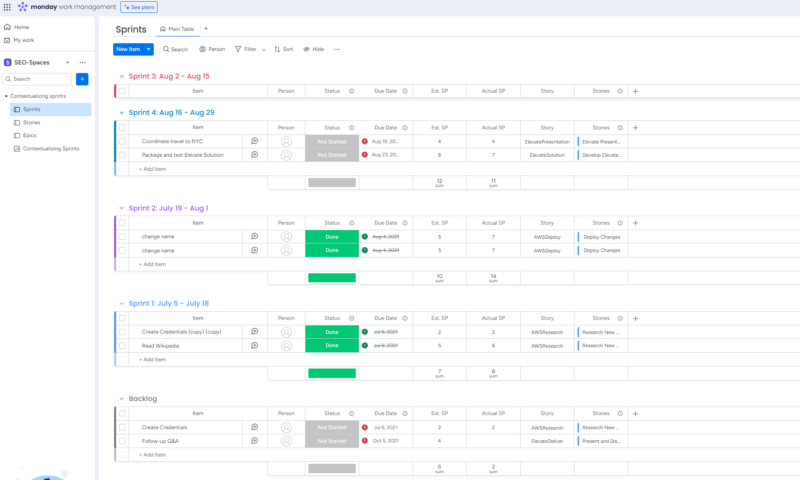
8. What Does Refactoring Mean in Agile Software Development?
Answer: Refactoring is the process of editing code to make it easier to understand and digest without changing how the software functions.
9. Which Agile Tools Are Most Popular Among Agile Teams?
Answer: Popular Agile and project management tools include Jira, SpiraPlan, monday.com and ClickUp. Most of the best project management software now offer tools for Agile processes.
10. How Do the Agile and Waterfall Models Compare in Software Development?
Answer: Waterfall tends to have a more linear approach to software development, where specific pieces of work must be completed before moving on to the next. On the contrary, Agile involves working on multiple user stories simultaneously, while often moving back and forth on tasks and fine tuning things throughout the process.
11. What Roles Exist Within a Scrum Team in Agile Scrum?
Answer: The core roles in a scrum team are the Scrum Master, the product owner and the development team.
12. How Do You Perform Agile in Developing Agile Software?
Answer: To perform Agile, you’ll need to plan your project vision and produce a roadmap. Then you must make a product backlog, set deadlines, plan your sprints, have daily meetings with your team, review your sprints and attend to any bugs or fixes. Tasks are generally tracked on kanban boards. Agile also includes constant communication with the end user.
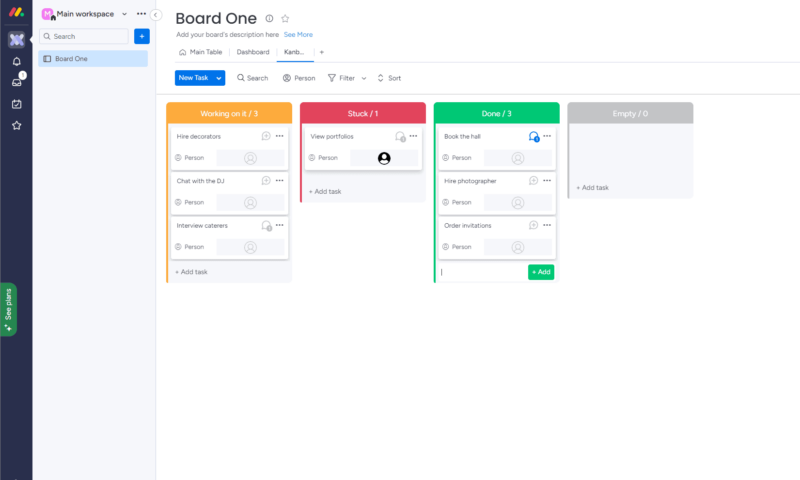
on kanban boards.
13. What Is a Product Roadmap in Agile Project Management?
Answer: A product roadmap is a detailed plan (and path) for how the development team will build a new software product. It allows the team to identify what the product’s purpose is, how it will function and what they must do to meet the end user’s requests.
14. How Are Story Points Significant in Scrum for Agile Teams?
Answer: Story points allow the development team to understand the complexity of a user story (feature) and identify whether a task requires extreme or light effort.
15. What Are the Different Agile Frameworks Used in Agile Development?
Answer: Popular Agile frameworks include Scrum, Kanban, Scrumban, Lean, XP, FDD, Crystal and SAFe.
16. How Is the Velocity of a Sprint Measured in Agile Projects?
Answer: The first step to measuring velocity is to plan a sprint and assign points to each user story. Next, create a list of all the completed user stories and add all the points together (for completed user stories only).
Finally, after adding the values together to work out the average points for the sprint, you can use this number to determine the sprint’s velocity, which can help you measure velocity for future sprints as well.
17. What Agile Metrics Should Agile Teams Focus On?
Answer: The best metrics to focus on in Agile are sprint burndown, epic and release burndown, velocity, cycle time and issues. It’s useful to use flow diagrams and control charts to measure key Agile metrics.
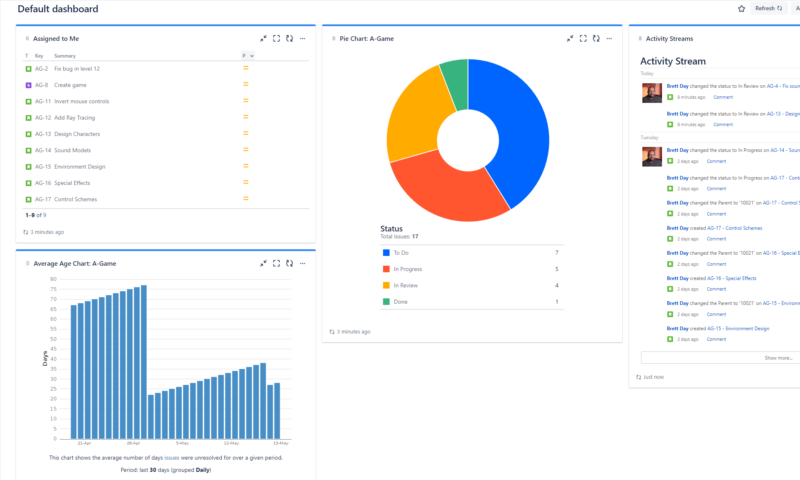
18. What Qualities Should a Good Agile Tester Have in Agile Testing?
Answer: An Agile tester should bring a positive attitude, and be adaptable and responsive. They must be able to successfully implement testing automations, take ownership of the product and lead the team by example.
19. Can You Describe the Main Roles in a Scrum Team?
Answer: A Scrum team includes a product owner, Scrum Master and development team. The product owner is responsible for interacting with internal and external stakeholders. They will design a vision and strategy for how the product will function and how it must be built.
The Scrum Master is the middle person between the product owner and the development team. They host daily scrum meetings, identify issues preventing the product from developing, track daily progress, hold sprint retrospectives and evaluate completed work.
The development team is responsible for writing the code required for a software product to function. They’re tasked with making any changes to the code, improving front-end functionality as requested by the end user and demoing software during sprint reviews.
20. What Is a Sprint Retrospective Meeting in Agile Scrum?
Answer: A sprint retrospective is used to reflect on sprints that the team has completed. It’s an opportunity to highlight any issues and create strategies to avoid or overcome them in future sprints. The Scrum Master runs the retrospectives, and the dev team attends them.
Agile Project Manager Interview Questions
Moving forward, the next set of questions and answers apply to the project manager of an Agile project. Some of them may cross over from the other sections, but it’s good to learn which will apply to you if you’re going for a project management role within an Agile team.
1. Can You Detail the Main Artifacts of the Scrum Framework in Agile Project Management?
Answer: The main artifacts are the product backlog, the sprint backlog and increments. The product backlog is a list of all the features a piece of software should have in order to perform. In simpler terms, it’s essentially a to-do list. The sprint backlog is a cluster of product backlog items that are used to plan upcoming work for the development team.
Lastly, increments are identifiable stepping stones toward the overall product goal. More than one increment can be added to a sprint, and to be considered as such, an increment must apply to a usable part of the software.
2. How Do Product Backlog and Sprint Backlog Differ in Scrum Project Management?
Answer: Simply put, the product backlog is a full list of the work that must be done to build a product. The sprint backlog is a cluster of items from the product backlog that are brought together and focused on for the duration of the sprint.
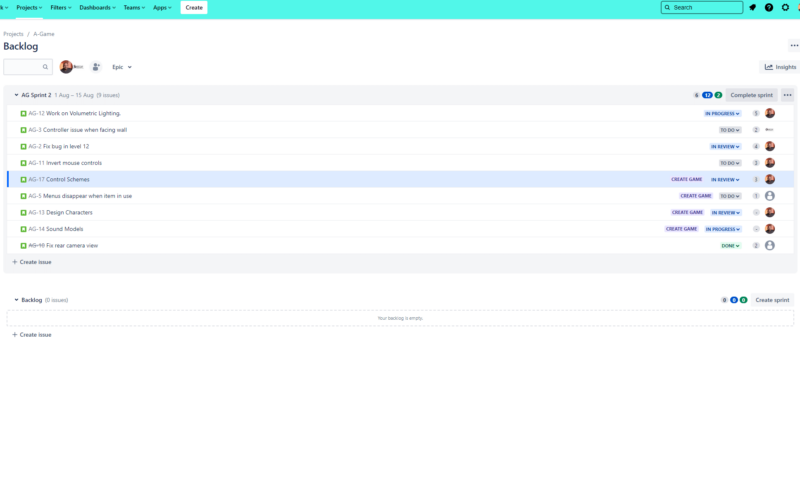
3. What Are the Responsibilities of a Scrum Team in Agile Development?
Answer: The scrum team is responsible for delivering a functional product to the end user. This includes delivering different iterations and increments on schedule and without delay.
4. How Do You Manage a Team Member Who Is Resistant to Agile Practices in Agile Teams?
Answer: It’s best to first hire someone who is familiar with Agile practices, as they’re more likely to get on board with the process. Failing that, meet resistance by highlighting the benefits of Agile practices and ensuring that they receive the appropriate support to be an effective member of the Agile team. If problems persist, a change manager can be brought in to help.
5. How Do You Manage Conflict Within Agile Teams to Ensure Successful Delivery?
Answer: Delving into the principles of Agile, you can resolve conflict through honest and open communication. By keeping the product at the core of your priorities, you can focus on ways to move forward as a team and avoid anti-patterns.
6. What Role Does a Scrum Master Play During a Sprint Retrospective Meeting in Agile Projects?
Answer: The Scrum Master should create a safe space where team members feel they can be transparent in their reflections of completed sprints. They should also offer guidance while highlighting how the team can move forward and improve during future sprints.
7. How Can a Scrum Master Be a Servant Leader in Agile Development Teams?
Answer: A Scrum Master can be a servant leader by protecting the development team from issues and roadblocks. It is their responsibility to teach their team about the core principles of Agile and Scrum so they can use that knowledge to do their best work. A servant leader doesn’t shame their team or give instructions through demands, but instead acts as a point of guidance.
8. What Is the Concept of Velocity in Agile and How Does It Impact Development Progress?
Answer: Velocity is the amount of work a team can complete during a single sprint. It’s measured in story points and sometimes other Agile estimation techniques. It helps determine how far forward a team can move with a section of the product and the full product.
9. How Do You Track Sprint Progress in Agile Project Management?
Answer: Tools such as burnup and burndown charts are useful when tracking sprint progress. They measure how much work is completed and how much work remains within the single sprint. Velocity and cycle time charts can also measure progress, especially regarding how fast and consistently the team can complete work within the sprint.
10. What Strategies Are Used to Manage Risks in Scrum Projects?
Answer: The first step is to identify the risk and determine how it impacts the progress of the work. Daily meetings allow dev teams to discuss the risks and develop plans to address them. If there are multiple risks, the teams prioritize and address them accordingly.
11. What Is Sprint Zero’s Purpose in Agile Software Development?
Answer: Sprint zero occurs before the project officially starts. It’s a way of laying down the foundations for future sprints. Sprint zero includes core responsibilities such as arranging stakeholder communication, gathering build requirements and creating the backlog.
12. How Is Scope Creep Managed in Agile Projects to Maintain Sustainable Development?
Answer: The best way to control scope creep is to start with a clear direction and hold honest conversations with your team and the end user. This helps you build the project’s foundations and keeps you informed on its health, allowing you to ensure that things stay as close to the original path as possible.
13. What Are the Key Differences Between MVP and MMP in Agile Software Development?
Answer: MVP serves as a behind-the-scenes look at a product. It lets the team show off a bare-bones version of the product, allowing the end user to offer feedback and direction. MMP is a more developed version of the working software, which has value for the end user and is in a usable state.
14. Why Are Daily Stand-Up Meetings Important in Agile Development Teams?
Answer: The daily stand-up meetings are important as they promote a culture of transparency and open communication. They’re the best way to stay up to speed on how each team is doing and to highlight any issues that teams must overcome.
15. What Are the Three Pillars of Scrum in Agile Project Management?
Answer: The three pillars of the Scrum framework are transparency, inspection and adaptation.
16. How Do You Ensure User Stories Meet the Requirements in Agile Software Development?
Answer: You ensure this by keeping user stories concise and not overloading them with unnecessary details. For larger user stories (epics), it’s important to break them down and make them easily digestible for the dev team. However, user stories should always contain the definition of ready (DoR) and the definition of done (DoD) plans.
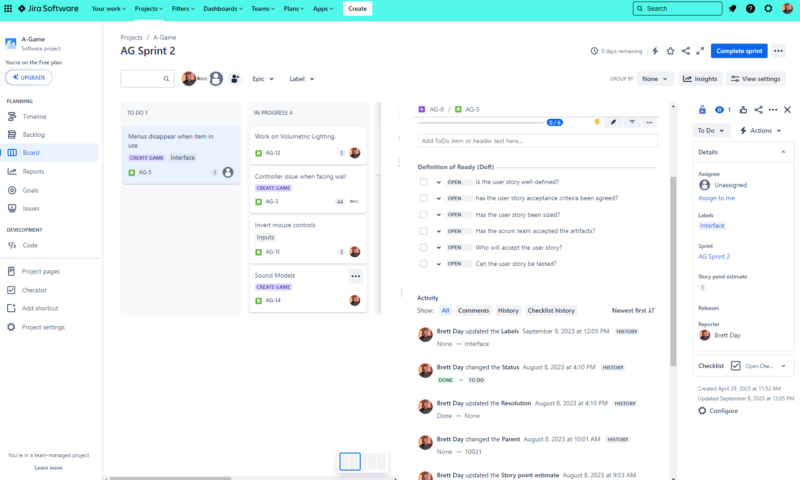
of ready and done before work is started.
17. How Would You Manage Multiple Scrum Teams in Complex Projects?
Answer: To streamline the work, you should create separate product backlogs for each team that you manage. Then divide your time equally between each team to ensure they get the appropriate support throughout the project.
Interview Questions for Scrum Master
In this final section of Agile interview questions and answers, we’ll examine what a potential Scrum Master can expect to face during an interview.
1. Can You Explain the Concept of Scrum of Scrums in Agile Development?
Answer: The Scrum of Scrums brings together the leaders of each team so they can discuss updates for the piece of work that they’re focusing on. It allows them to highlight issues and the progress that is being made. Overall, the point of the Scrum of Scrums is to ensure that each team can meet its sprint goals and to devise strategies to accomplish them.
2. What Are the Important Tools Used in a Scrum Project for Agile Teams?
Answer: A tool like Jira that is specifically built for Agile workflows is useful because it comes with a scrum board. It also has places for creating a backlog and epics, and for logging issues. More advanced Agile tools like SpiraPlan suit those with longstanding experience in Agile project management.
You can learn more about Jira in our full Jira review. If you need more advanced software, then check out our SpiraPlan review.
3. How Does a Scrum Master Facilitate Sprint Planning Meetings in Agile Projects?
Answer: The Scrum Master is responsible for preparing a list of priorities for the specific sprint that the team is working on. They will use the meeting to allow the development team to share their thoughts about the upcoming work and to delegate work to other team members. The overall goal of the meeting is to keep the team focused and on track.
4. What Are the Essential Skills of a Scrum Master in Agile Scrum?
Answer: These skills include having a deep knowledge of the Scrum framework, ideally gained through long-standing experience spearheading scrum teams. Softer skills include the ability to communicate, be approachable and adapt when things change or don’t go exactly as planned. A good Scrum Master leads by example rather than through commands.
5. How Do You Handle Impediments in Scrum to Ensure Continuous Improvement?
Answer: The best way to handle impediments is to bring different teams (and external stakeholders) together and hold open conversations regarding the impediment that’s preventing the team from moving forward. Acting quickly and confidently is the best way to resolve the impediment and allow the development team to move forward with the work.
6. What Does a Sprint Retrospective Involve in Agile Scrum?
Answer: The sprint retrospective is an opportunity for the team to discuss what went well and what they can improve. It’s the best opportunity to highlight key metric data and come up with an action plan for improving output or keeping it consistent.
7. How Is a Sprint Burndown Chart Managed in Scrum Projects?
Answer: The management of the burndown chart begins by first estimating the effort required to complete the work. Once the work is active, monitoring the burndown chart daily allows the Scrum Master to see how much effort is required to complete the work. They can then present the true dataset in the daily meetings and highlight how they can improve team productivity.
8. What Support Does a Scrum Master Provide to the Product Owner in Agile Projects?
Answer: The Scrum Master supports the product owner by helping to define the product needs, communicating the required work to the development team and determining the best way to ensure its completion.
9. Why Is the Daily Stand-Up Meeting Important in Agile Scrum Teams?
Answer: It’s important because it allows the team to share important updates and progress details, ensuring that everyone is constantly informed on how development is going. It also gives each team member a voice, which helps them to feel valued and supported. As a result, it encourages them to do the best work possible.
10. How Do You Ensure Continuous Improvement in Agile Teams?
Answer: Continuous improvement is achieved through open communication within a team. Creating an environment that encourages people to raise issues and concerns makes it easier to find solutions. Also, monitoring the complexity and the time spent completing the work helps the team find ways to be more productive and efficient as the project progresses.
11. How Are Conflicts Managed Within Scrum Teams to Promote Team Collaboration?
Answer: As a Scrum Master, it is your role to promote a culture of transparency. If a problem exists within the team, it’s important to create an environment where team members can express their issues so you can find a route forward.
Also, you should remind team members that delivering a workable product to the end user is the priority and highlight the importance of putting differences aside to focus on the overall goal.
12. What Role Does a Scrum Master Play in a Sprint Retrospective to Facilitate Agile Practices?
Answer: Here, the Scrum Master’s role is to present any relevant metric data that highlights performance. They should also allow team members to express their feelings about the sprint and gauge what they can do in future sprints. The point of the retrospective is not to dictate, but to allow the development team to identify areas of improvement.
13. How Can a Scrum Master Ensure Timely Delivery of Action Items in Agile Projects?
Answer: The first step is to create a priority list for all the action items. Then, create a plan for how best to complete each action item. Once the work has begun, monitoring its progress daily and removing issues will help ensure the team completes its action items on time.
14. How Is Timeboxing Used in Scrum to Enhance Agile Project Management?
Answer: Timeboxing is the process of having defined time periods to complete work. It is useful because it brings structure to a person’s workflow and allows them to focus on deep work without distraction for a defined time period. Beyond tasks, Timeboxing is also useful for team meetings and sprints as it ensures that everything stays on schedule.
15. What Are the Different Types of Burndown Charts Used in Agile Methodology?
Answer: Typically, burndown charts are divided into two types: sprint burndown charts and product burndown charts. The former tracks specific sprints, and the latter tracks all the work within a project.
16. Can You Explain the Concept of the Confidence Vote in SAFe for Agile Teams?
Answer: The confidence vote takes place at the end of the PI planning. It’s an opportunity for the team to express how confident they are that they can deliver the increment of the product within the intended timescale. Each team member gives a vote of confidence, often using a scale of one to five (one being the least confident, five being the most).
17. How Would You Handle a Difficult Stakeholder in Agile Project Development?
Answer: The first step is to listen to the issues the stakeholder is expressing. By not entering into conflict, it gives the stakeholder confidence that you take their issues seriously. Then, it’s your job to present realistic solutions and manage the stakeholder’s expectations, while also reassuring them that building the best product is at the top of your priority list.
18. What Is the Role of a Scrum Master in Coordinating Between Multiple Agile Teams?
Answer: A Scrum Master must make sure that each team feels supported and doesn’t feel isolated in comparison to other teams. They must also establish strong communication between each team and be available to resolve any conflicts that may restrict the development of the product.
Final Thoughts
The above Agile interview questions and answers should put you in good stead when preparing for an interview. Because of the diversity of questions, we recommend bookmarking this article so you can refer to it whenever you need a refresher.
Before you go, if you’re in the market for a new Agile tool, then we recommend checking out our monday.com review as it has many tools that a team would need for Agile processes. If you’re looking for a more dedicated tool, then read our ClickUp review, as it was specifically designed for Agile and software development teams.
Did you find this guide useful? What other areas would you like us to focus on for project management interviews? Can you think of any other Agile interview questions? What is your favorite tool for Agile? Let us know in the comments. Thanks for reading!
FAQ: Agile Methodology Interview Questions & Answers
-
Working as a product owner, Scrum Master, software developer or project manager within a team that uses Agile processes to complete projects is considered Agile experience.
-
The four pillars of Agile are individuals and interactions over processes and tools; working software over comprehensive documentation; customer collaboration over contract negotiation; and responding to change over following a plan.
-
There are more than four types of Agile, but the most popular tend to be Scrum, Kanban, Scrumban and XP.
-
The steps (also known as ceremonies) are sprint planning, daily stand-up meetings, sprint reviews and sprint retrospectives.
The post 55 Agile Interview Questions and Answers for 2024: Showcase Your Agile Experience appeared first on Cloudwards.

